8 Best Police Flashlights In 2024: Reviews, Top Picks, And Buyer’s Guide
Last Updated on
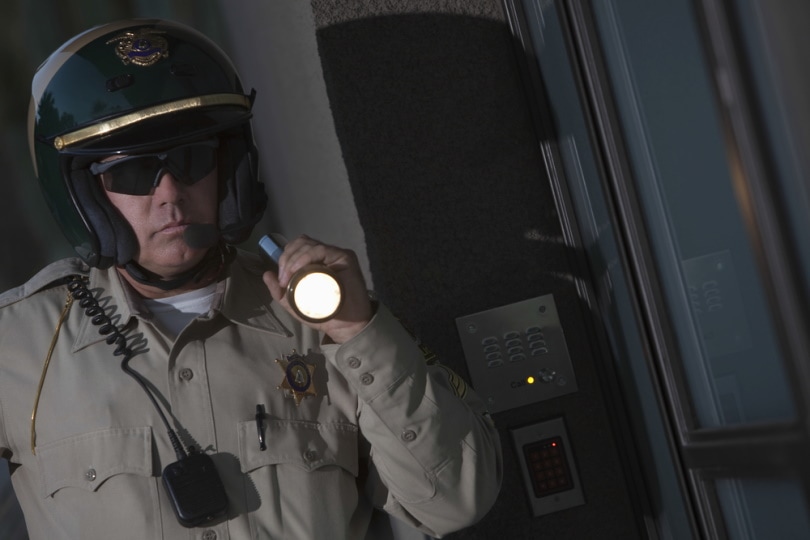
Police often face hostile suspects in darkness, which is why they usually carry high-powered flashlights capable of both illumination and disorientation. Coincidentally, these are also some of the most durable and powerful flashlights available for sale. Whether you’re a police officer looking for some extra light or a regular person who needs something for when the lights go out, you’re sure to find a flashlight with awesome reviews that could be perfect for you.

A Quick Look at Our Favorites in 2024
| Image | Product | Details | ||
|---|---|---|---|---|
| Best Overall |
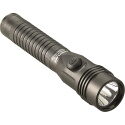 |
Streamlight Strion |
|
CHECK PRICE |
| Best Value |
 |
Streamlight MacroStream |
|
CHECK PRICE |
| Premium Choice |
 |
Maglite Ml300l |
|
CHECK PRICE |
 |
Surefire G2X Tactical Flashlight |
|
CHECK PRICE | |
 |
Streamlight Stinger |
|
CHECK PRICE |
The 8 Best Police Flashlights
1. Streamlight Strion – Best Overall
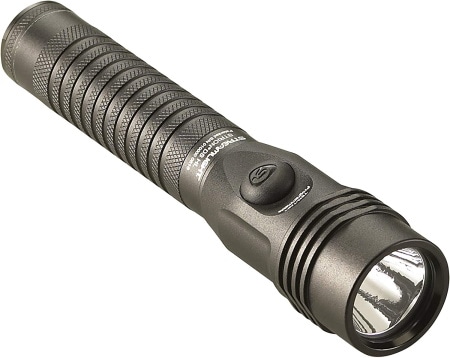
| Lumens | 700 |
| Material | Anodized aluminum |
| Beam Distance | 718.5 feet |
Our top pick for the best overall police flashlight is the Streamlight Strion because it is constructed with aircraft-grade aluminum and outputs up to 700 blinding lumens. It’s a bit smaller than comparable options, but the sheer lumen output makes it ideal for law enforcement or anyone who wants an ultra-bright flashlight. It’s impact resistant up to 6.5 feet and boasts an IPX4 water-resistance rating. There are two switches, located on the tail and head, and three light settings for all situations a police officer could face in the line of duty.
- 700 lumens for lighting up entire areas or disorienting assailants
- Super-durable, aircraft-grade anodized aluminum construction
- Anti-roll head to prevent it from rolling away or getting damaged
- Three light settings for any situation
- Impact and water resistant
- Gets hot when used for long periods of time
2. Streamlight MacroStream – Best Value
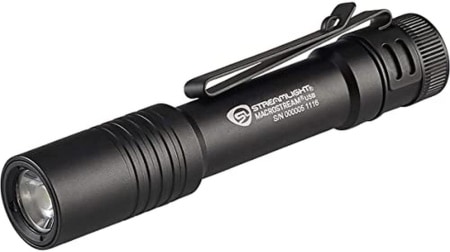
| Lumens | 500 |
| Material | Anodized aluminum |
| Beam Distance | 295 feet |
For a bright flashlight that doesn’t break the bank, the Streamlight MacroStream delivers everything you need. Its highest setting is a respectable 500 lumens, which should be plenty for most situations, but it also has two lower settings. Don’t worry about carrying around spare batteries, either, because this flashlight features a USB charging port that fully charges it in 4 hours. It also has a handy clip to attach it to your hat for hands-free use in case you need both hands and light. With the affordable price, this makes it our choice for the best police flashlight for the money.
- 500 lumens can illuminate virtually any area
- Durable aircraft-grade aluminum construction
- 3 settings
- Compact size
- USB charging for convenience
- Long charge time
3. Maglite Ml300l – Premium Choice

| Lumens | 694 |
| Material | Anodized aluminum |
| Beam Distance | 1,364 feet |
Maglites are one of the most iconic flashlights in the world, and we’re willing to bet more than a few police officers still carry them. Maglites have a high-intensity beam and an aluminum body that can serve as a blunt weapon in a pinch. What truly sets it apart is its long beam distance, which illuminates over 1,000 feet away. It runs off D batteries, which help give it an extremely long runtime. Finally, Maglites are solidly constructed and can last decades. If you need a long-lasting flashlight that can double as a weapon, look no further.
- Doubles as a flashlight and blunt weapon
- Long beam distance
- Very long runtime
- Reputation for durability
- It’s rather large, which could be uncomfortable for small hands
- Heavy weight makes it hard to store
4. Surefire G2X Tactical Flashlight

| Lumens | 500 |
| Material | Nitrolon |
| Beam Distance | 613.5 feet |
For a compact flashlight that can double as a weapon, the Surefire G2X doesn’t pull any punches. The long-lasting LED bulb is surrounded by a strike bezel crafted to cause more damage when used against an assailant. The durable aluminum body is impact and water resistant, and the lens is scratch resistant to prevent dulling illumination over time. For situations that don’t demand its full 50 lumens, this flashlight also offers a long-lasting, five-lumen mode that isn’t so blinding.
- Tough nitrolon and aluminum body
- Strike bezel for fending off attackers
- Scratch-resistant LED lens
- Water and impact resistant
- Clip is a bit flimsy
- Relatively short battery life
5. Streamlight Stinger
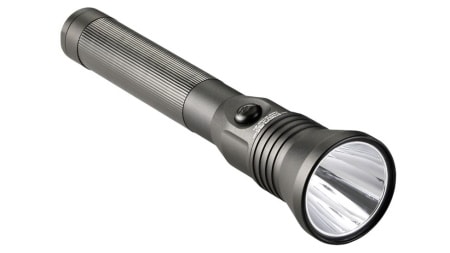
| Lumens | 740 |
| Material | Machined aircraft aluminum |
| Beam Distance | 1,371 feet |
Another solid offering from Streamlight is the Stinger, an ultra-bright flashlight with tough aluminum construction, ergonomic design, and an anti-roll ring to prevent it from rolling away. The super-bright beam is enhanced by a deep-dish parabolic reflector, which helps keep a tight beam. It also has a strobe mode for sending distress signals or startling attackers. Add in water, scratch, and impact resistance, and you have a solid flashlight. The only real con is no lower light settings, which is inconvenient when using it around others.
- Bright illumination for hundreds of meters
- Anti-roll ring and ergonomic grip keep it in your grasp
- Scratch-resistant polycarbonate lens
- Long charge time
- High price
6. Fenix PD Series Flashlight
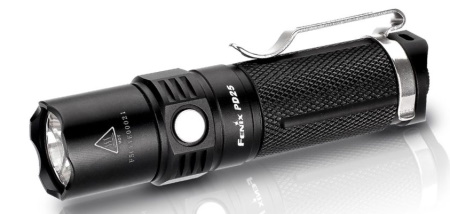
| Lumens | 550 |
| Material | Aluminum |
| Beam Distance | 427 feet |
The Fenix PD flashlight packs 550 lumens into a small package, with digitally regulated voltage to ensure a consistent beam throughout its battery life. With its eco setting, it gets an incredible 430 hours of use, though higher settings will slash this considerably. The body is slip resistant with an anti-roll ring and anti-abrasive finish to prevent scratching and damage. If that’s not enough, the LED bulb has an estimated lifespan of 50,000 hours. For a long-lasting and powerful compact flashlight, you could do much worse.
- Digitally regulated voltage keeps a consistent beam
- Low-voltage warning function tells you when to change batteries
- Extremely durable aluminum body with anti-abrasive finish
- Eco setting for conserving battery power
- Rechargeable batteries mean you need a separate battery charger
- Batteries have short lifespan
7. Smith & Wesson MP12 875 Lumen Flashlight
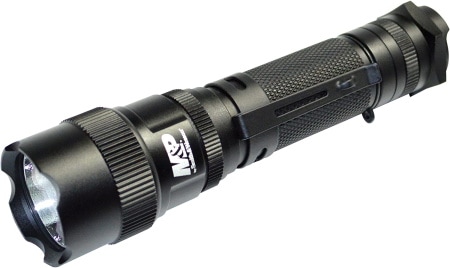
| Lumens | 875 |
| Material | Anodized aluminum |
| Beam Distance | 794 feet |
In addition to making some of the most beloved guns in the US, Smith & Wesson makes some seriously powerful flashlights. Their MP12 can put out an intense 875 lumens, which could light up even underground caves. To conserve battery, it also features a 43-lumen mode that lasts up to 3 hours. Self-defense enthusiasts will be happy to know this flashlight is also weapon mountable, but the manufacturer doesn’t recommend it for pistols. For convenient transport and storage, it comes with a pocket clip, holster, and lanyard.
- 875 lumens makes this the second-brightest flashlight on this list
- Weapon mountable
- Waterproof
- Shatterproof lens
- Too cumbersome to mount on pistols
- Only 2 light settings
8. Surefire UDR Dominator

| Lumens | 2,400 |
| Material | Anodized aluminum |
| Beam Distance | 29,53 feet |
For extreme situations and hardcore survival enthusiasts, the Surefire UDR Dominator checks all the boxes. Its extremely bright, 2,400-lumen beam can reach literally thousands of feet away, and you can’t help but notice the aggressively shaped bezel, appropriately designed for self defense. You can either recharge the flashlight itself or use disposable batteries for maximum power. Settings are conveniently located on a selector ring, and the switches on the head provide momentary-on activation for short bursts of light. The main cons of this flashlight are its exorbitant price and heavy weight, which put it out of reach for most people.
- Extremely powerful 2,400-lumen beam
- 9 different light settings to save power
- Can be charged or run on batteries
- Aggressive bezel for self-defense
- Extremely expensive
- Heavy

Buyer’s Guide: How to Select the Best Police Flashlights
When you’re buying a flashlight, there are several things to consider. The main things to look for in a flashlight are brightness, durability, modes and switches, and battery or charging type. Let’s check out what you need to know about each of these so you can make a more informed buying decision.
Brightness
Police need flashlights for two reasons: to light up dark areas and to disorient potentially hostile suspects. Also, police use flashlights to check pupil dilation for signs of intoxication. LED bulbs are replacing other bulb types because they can offer greater illumination while also lasting several times longer than filament-based bulbs.
Beam distance is also a crucial part of brightness. The more lumens a flashlight offers, the farther its beam can travel. This can make tracking down fleeing suspects easier or aid in searching for missing persons. Police find themselves in some very dark places, and flashlights that are bright enough to simulate daylight in dark rooms are extremely useful.
Durability
While durability is always a concern, it’s of paramount importance for police flashlights. They carry flashlights just about everywhere, so they need a light that’ll last. Anodized aircraft-grade aluminum provides the most durability while remaining light, which is why it’s the most popular material for police-grade flashlights.
Durability-related features like abrasion resistance, scratch-resistant lenses, water resistance, and impact resistance are crucial, too. Police find themselves in all types of situations, and it’s fair to say their gear suffers more wear and tear than usual. Ergonomic, slip-resistant grips help retain your grip on the flashlight, and if that fails, anti-roll rings help to stop it from rolling away.
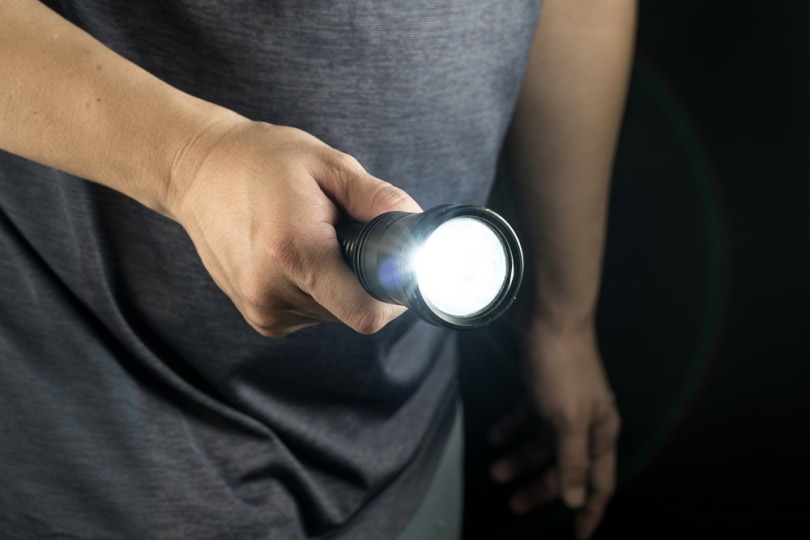
Modes and Switches
Ideally, even an ultra-bright flashlight should have multiple light settings. After all, you don’t always need a fireworks display. Less powerful settings also greatly reduce battery drain. Another interesting feature commonly seen in police flashlights is momentary-on action, which is where you can briefly activate the light by applying slight pressure to the button.
For most police flashlights, the switch is located at the tail end. This helps police maintain a state of readiness in case a suspect turns out to be hostile and they need to strobe the flashlight or use it as a weapon.
In some rare cases, flashlights come with red or green LEDs. Green LEDs, in particular, are energy efficient and save as much as 20% of the power used by the light. They’re also very useful at night because they won’t ruin your night vision like white LEDs.
Battery or Charging Type
Flashlights that use batteries are usually always brighter than rechargeable flashlights, but they’re less convenient because the batteries need to be changed out. However, just carrying around spare batteries can solve this problem pretty quickly.
Rechargeable flashlights are typically charged with a USB cable and help to cut down on buying new batteries. When you use a flashlight as much as a police officer does, that adds up quickly. Rechargeable batteries help counteract this, but they lose charge over time.
On the flip side, if your rechargeable flashlight dies, you can’t just pop in fresh batteries. For survival situations, for example, this would be a no-brainer.
One interesting thing we’re seeing in newer flashlights is the ability to both recharge and use batteries. This combines the best features of both types, but such flashlights are typically more expensive.
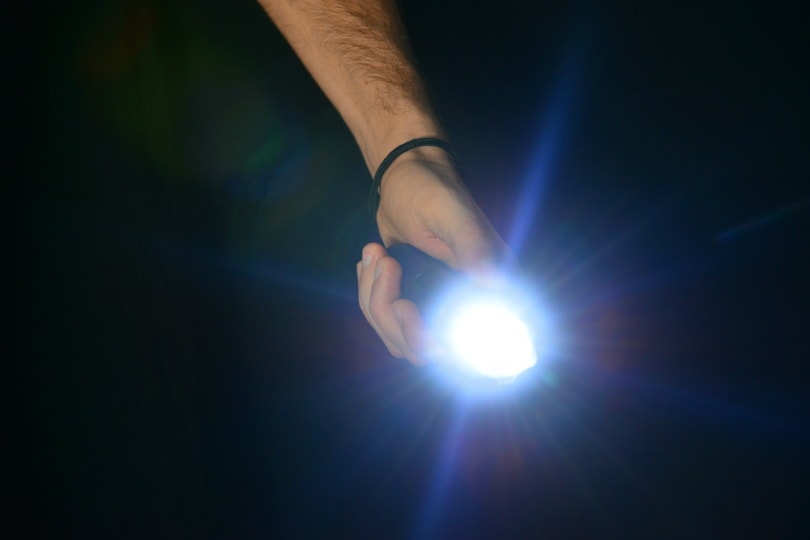

Conclusion
Police use some of the most rugged and powerful flashlights out there, which makes them great for survivalists and regular people interested in high-powered gear. The flashlights listed above are some of the best police flashlights available today, and there’s sure to be one that fits your needs.
If you’re looking for one of the best overall police flashlights, give the Streamlight Strion a try. However, if you need to save some money, the Streamlight Macrostream might be a better option.
- See also: 5 Best AR Flashlights
Featured Image Credit: sirtravelalot, Shutterstock
About the Author Codee Chessher
Codee Chessher is a freelance writer with extensive knowledge on a variety of subjects that include travel, sound engineering, automotive, optics, DIY, pets, and more. He has a colorful past that includes building schools and commercial driving, but the written word was always his first love and continues to be his passion. He believes there's nothing a well-worded sentence can't accomplish.
Related Articles:
What Is the Best Binocular Magnification for Hunting? Optical Features Explained
How to Clean a Refractor Telescope: Step-by-Step Guide
How to Clean a Telescope Eyepiece: Step-by-Step Guide
How to Clean a Rifle Scope: 8 Expert Tips
Monocular vs Telescope: Differences Explained (With Pictures)
What Is a Monocular Used For? 8 Common Functions
How to Clean a Telescope Mirror: 8 Expert Tips
Brightfield vs Phase Contrast Microscopy: The Differences Explained



